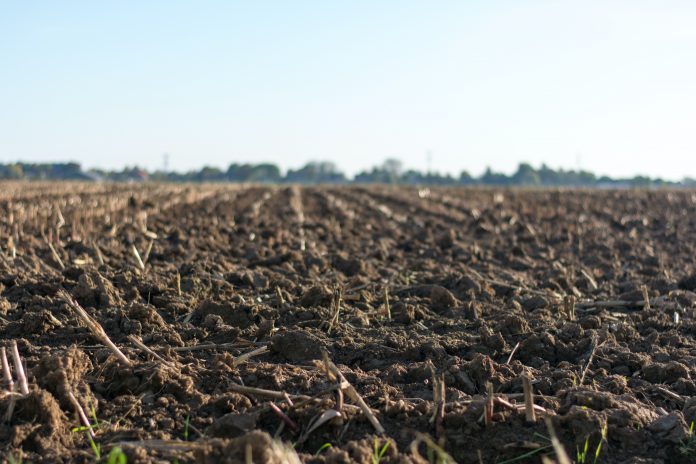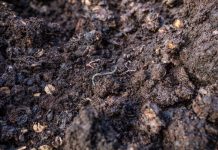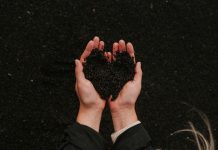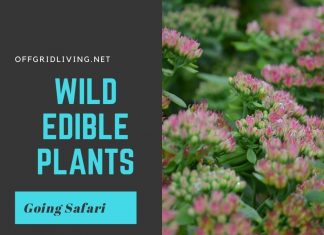It’s no surprise that the quality of your soil directly affects the quality of your food production. Soil harbors a wealth of secrets – secrets that, if we can learn to understand, help us to better sustain our off-grid homesteads and farms.
In this blog post, we’ll explore how science influences sustainable agricultural practices by looking at some key components of healthy soils: nutrient cycles and beneficial microbes.
We’ll also discuss how each one contributes to crop productivity and yield—and ultimately guides us in our quest for delicious homegrown meals!
What is Soil and Why Does it Matter for Sustainable Agriculture
Soil is a complex mixture of air, minerals, water, organic materials, and microorganisms. It forms the foundation of terrestrial ecosystems and plays an integral role in considerations of sustainable agriculture.
Supporting the growth of crops and land animals, soil supplies essential nutrients to crops while serving as a habitat for beneficial organisms such as earthworms.
Furthermore, soil helps filter pollutants from surface water and groundwater sources while maintaining its chemical balance by storing excess salts and releasing them slowly over time.
However, its resilience has been challenged due to environmental degradation from long-term cultivation or mining practices.
In the realm of agriculture, maintaining the health of soil is not only crucial for environmental sustainability but also for sustaining agricultural jobs and livelihoods.
Skilled professionals, ranging from agronomists to farm managers, are essential for implementing practices that preserve soil quality while maximizing productivity.
Hence, agricultural recruitment agencies like Agri Talent play a crucial role in connecting these professionals with opportunities in the field. With a focus on the Australian agriculture industry, Agri Talent specializes in providing permanent recruitment and executive search services.
Their dedicated team works closely with clients to grasp their recruitment needs, strategic objectives, and core values, ensuring the right match between talent and agricultural endeavors.
As one of the most important components in achieving sustainable agricultural systems, soil can continue to support agricultural production if it is managed sustainably – protected from excessive tillage or use of chemical fertilizer that can deplete minerals or pollute freshwater sources.
Acknowledging its role in environmental health and food production is key to preserving our planet’s long-term vitality through practices that promote conservation and sustainability.
The Different Types of Soil and Their Uses in Farming
Soil plays an integral role in off-grid living and homesteading. There are many different types of soil, each with its own unique properties and characteristics which can be used to cultivate a fruitful garden or farm.
Sandy soils, for example, drain more quickly than clay. Loam soils, which are a combination of both sand and clay, provide optimum drainage and hold water better than other types of soil.
Peat soils also have great water-holding capacity but poor drainage. Have sump pump drain installation to improve your drainage system. Each type of soil must be managed differently when being used for off-grid living or farming; it is important to understand the pros and cons associated with each type in order to ensure successful harvests and sustained off-grid life.
Understanding the pH Scale and Its Impact on Plant Growth
Measurement of the acidity or alkalinity of solutions is an essential part of biological research. The pH scale provides such a measure, quantifying the concentration of hydrogen ions and assigning a numerical value to the acidity or alkalinity of a liquid.
In general, a pH below 7 indicates an acidic solution while a pH above 7 indicates an alkaline. For plants, two extremes of the pH scale are unfavorable, with acidic soil and overly alkaline soil both resulting in substantially reduced growth.
For optimal plant growth, it is therefore important to understand not only the functioning of the pH scale but also its application to gardening; by maintaining your soil’s acidity or alkalinity within appropriate ranges, you can help ensure lush and healthy plant vibrancy.
Composting 101 – Basics of Turning Organic Waste into Fertile Ground
Composting is the process of taking organic waste such as kitchen scraps, leaves, and yard clippings and turning it into nutrient-rich fertilizer.
Once you have a compost bin set up correctly, it is a relatively simple process; organic materials are combined with decomposers like worms and bacteria to break it down into a form of soil that can be used in your garden or lawn.
To successfully compost at home, all you need is an outdoor space to keep the bin, some organic waste material to add to it periodically, the right balance of carbon and nitrogen-rich material in the compost pile, regular aeration for oxygen flow within the pile and time for the materials to break down.
Following these steps should lead you to healthy soil full of minerals that will help enrich your plants and vegetable beds.
Understanding Crop Rotation and Its Benefits for Healthy Soil
Crop rotation is a farming practice that involves growing specific crops in a set pattern generated over several years.
This kind of planning helps to manage many different elements of soil health, including improving fertility, controlling pests and weeds, and promoting greater diversity among plant species.
In general, longer crop rotations are associated with more positive economic outcomes due to improved soil conditions over the course of multiple seasons.
Moreover, researchers have found evidence that higher crop yields can be made possible when proper rotation methods are employed.
For example, data from 2017 indicates that the use of three-year rotations yielded about 25-35% more revenue for farmers than two-year rotations.
Overall, understanding the basics of crop rotation and its benefits for healthy soil can be an important factor for successful agricultural production in any region.
Pesticides, Herbicides, and Other Chemicals Used in Conventional Agriculture
As sustainable agriculture becomes an increasingly popular concept, experts urge consumers to think carefully about the use of pesticides, herbicides, and other chemicals used in conventional agriculture.
Unfortunately, the widespread use of these chemicals has contributed to environmental and health issues, making sustainable farming practices a much safer alternative.
Though sustainable farming is often initially more costly for farmers, it can result in healthier crops with greater yields and fewer mishaps, providing economic benefits over time.
To ensure a sustainable future for all of us, it is important for us to support sustainable agriculture whenever possible.
Soil is truly a wonderful resource and we need to use it responsibly if we are going to maintain sustainable agriculture.
Knowing the different types of soil, their uses in farming, and how pH levels and other factors affect our ability to grow crops successfully is key to planting healthy, productive plants.
Composting also helps regenerate soil and keep it rich in nutrients. Crop rotation helps utilize the importance of cover crops for protecting soil life when fields are not planted with vegetables or grains.
And finally, understanding how certain chemicals in agriculture, such as herbicides, can impact soil health is essential for avoiding unexpected nutrient losses, weed proliferation, and other long-term damage to the delicate ecosystem of our soils. Sustainable agriculture depends on healthy soils – let’s do what we can to protect them!














